When he was 14 years old, Easton LaChappelle built a robotic hand controlled by a wireless glove using LEGOs, motors from toy airplanes, fishing line for tendons, and electrical tubing for fingers.
His goal was to create an alternative for those in need of a prosthetic that wouldn’t cost them tens of thousands of dollars.
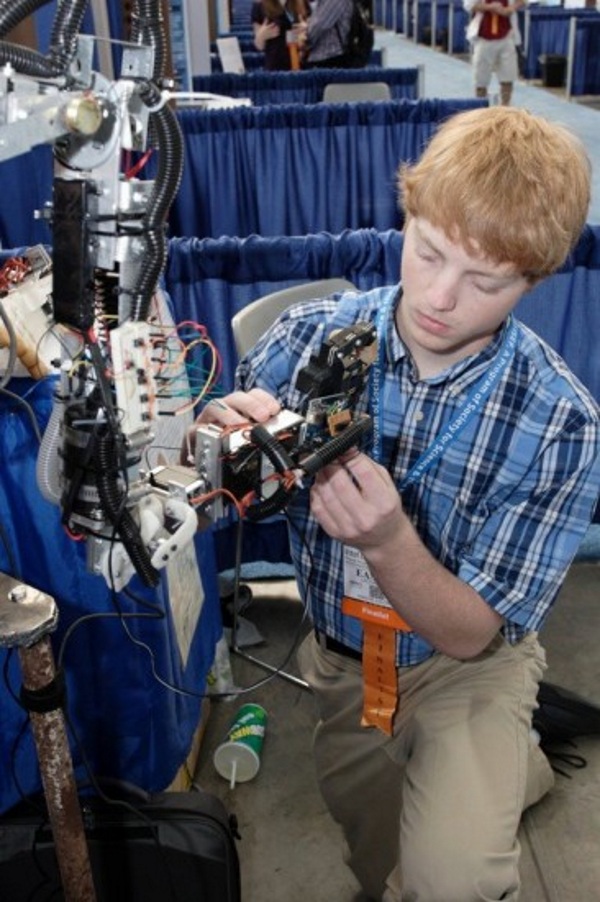
LaChappelle’s inspiration for this project came when he met a 7-year-old girl who was born without a right arm. Her parents told him that she had to use a prosthetic limb that cost $80,000, and this inspired him to create a cheaper alternative.
He entered his first version of a robotic hand into a 2011 Colorado State science fair and finished in third place. While perfecting the hand afterwards, he contacted Jeremy Blum, a popular YouTube user and Google employee, for advice. Blum agreed took a look at LaChappelle’s work and fixed the device’s programming code so as to allow its control glove to wirelessly communicate with the hand underneath.
LaChappelle also updated the hand itself by buying an old Nintendo Power Glove and using its sensors to improve upon the glove’s range and sensitivity. This also drove the price of the prosthetic down a bit more.
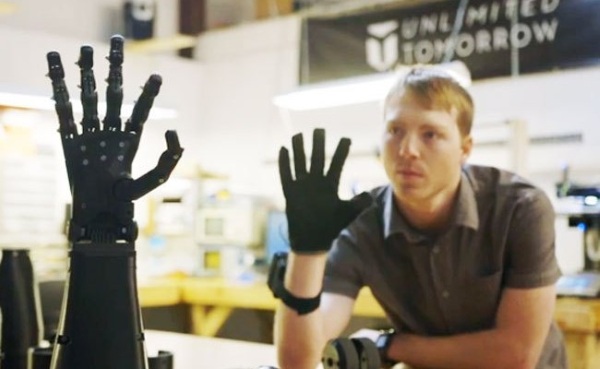
At this point, LaChappelle felt his hand was to a point of advancement where he could shift his attention to developing a fully-operational robotic arm.
He came up with a design that ran about $500 to create — a price he felt was still too expensive for a prosthetic arm. So, to drive the cost down a bit more, he turned to 3D printing.
Fortunately, LaChappelle’s pseudo-advisor Blum worked with MakerBot at the time and had access to its $1200 Thing-O-Matic 3D printer. Blum told LaChappelle how to make his designs for the robotic arm work best with Thing-O-Matic. LaChapelle went ahead and made the recommended changes, and sent the specs to Blum who then printed out the parts and sent them back to LaChappelle.
At this time, Blum also taught LaChappelle that by connecting potentiometers to the arm’s DC motors, the arm could be stopped when it was in a desired position. Doing this tuned the motors to servos, thereby allowing the robotic arm to do just about anything a human hand could do, including shake hands and throw objects.

At this point, word began to get out about LaChappelle’s efforts, which led to his receiving an invite to the third annual White House Science Fair. While there, his robotic arm shook hands with President Obama.
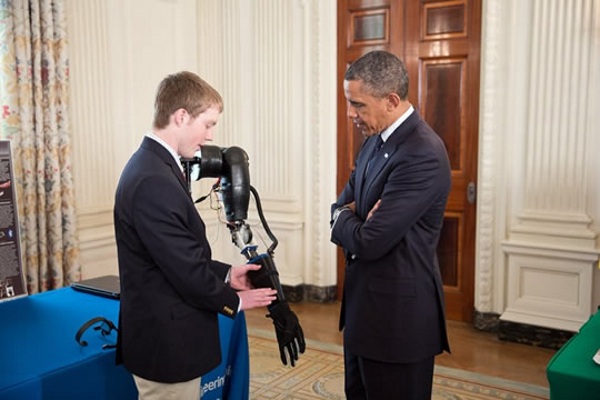
For his latest version, LaChappelle has developed an EEG headset that reads 10 different channels of a human brain. This allows the arm to be controlled by a person’s thoughts, which LaChappelle believes will not only give the individual a functional advantage over the more typical prosthetic arms on the market, but also provide significant psychological benefits to the individual too.
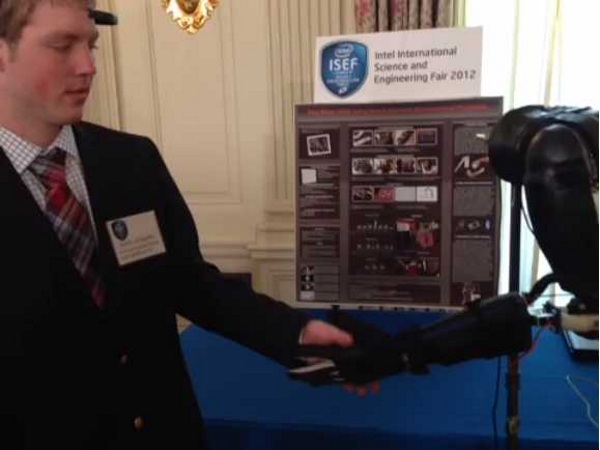
Now 19 years old, LaChappelle’s latest version of his robotic arm can be built for $350. On his website, UnlimitedTomorrow.com, you can download the instructions, designs, and software to build the same exact model as that which he has created and is presently demonstrating around the world.


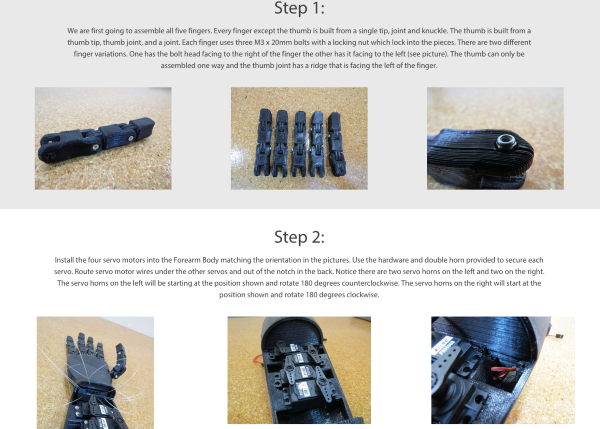
Presently, the guides detail how to build the hand, elbow, and rotating joint. LaChappelle plans on releasing additional instructions on how to build a shoulder in the near future.
Via garbimba.com
Advertisement
Learn more about Electronic Products Magazine





